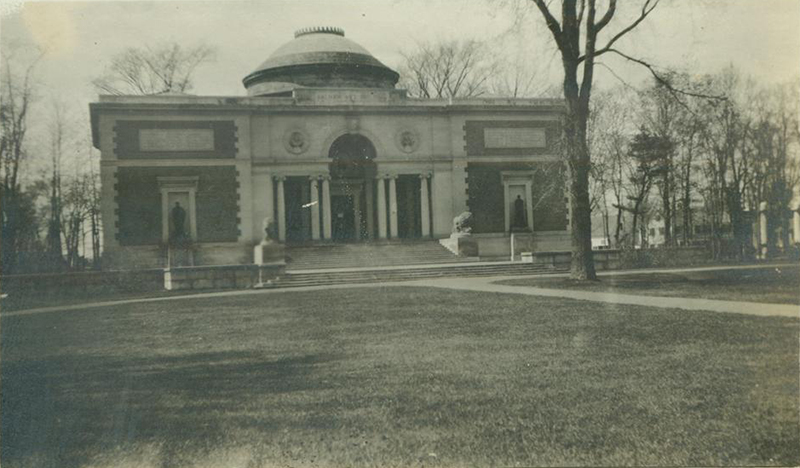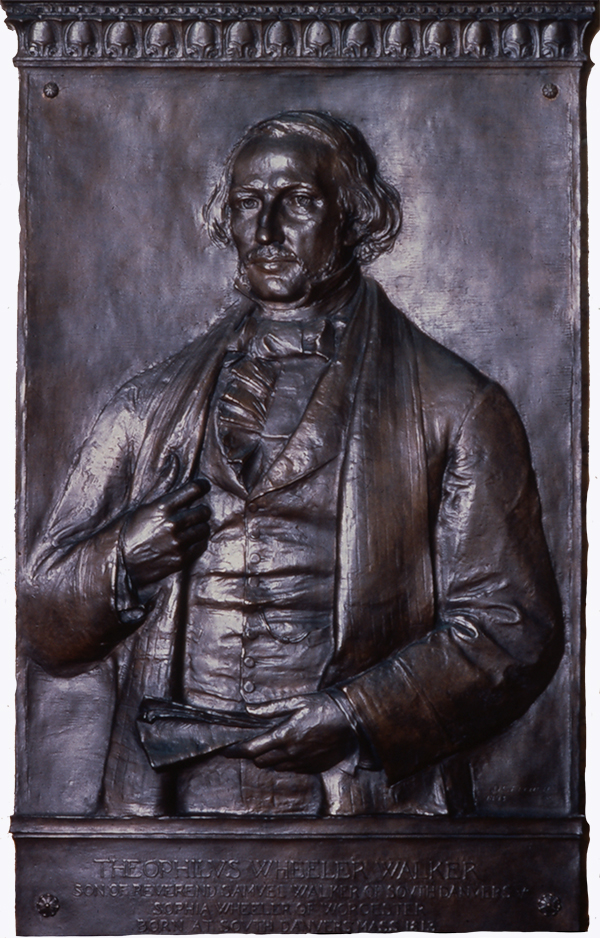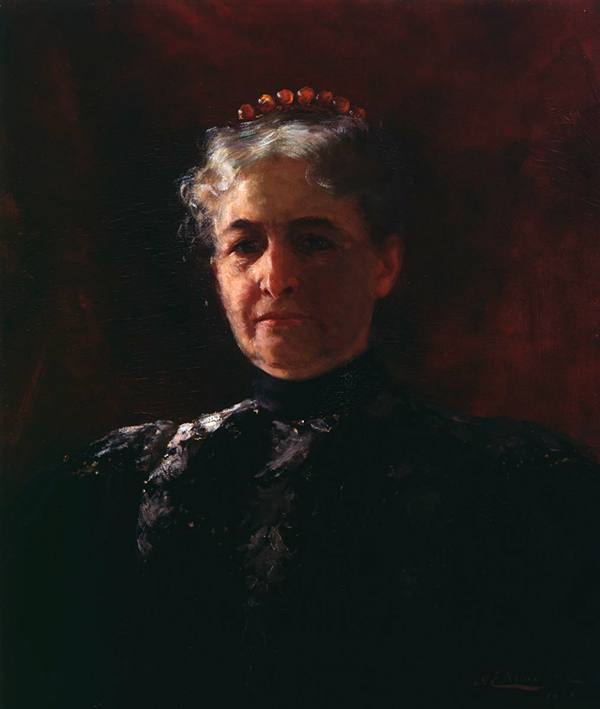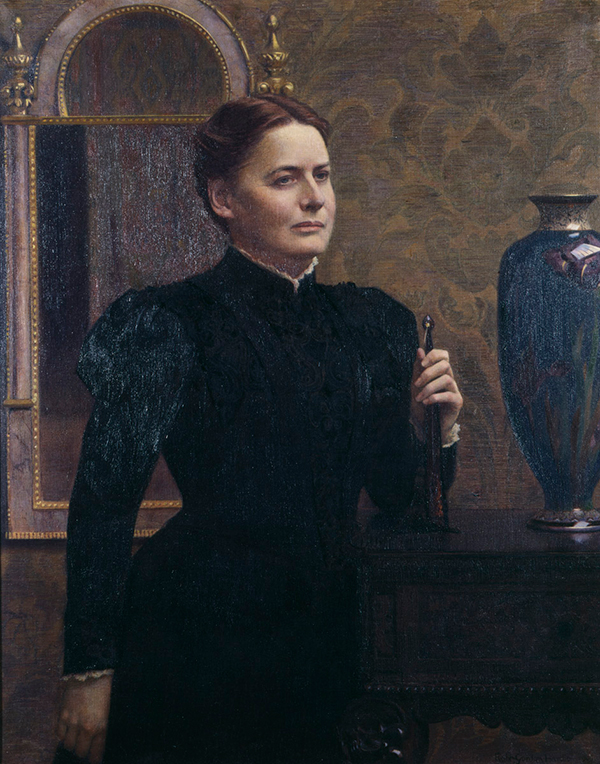Happy 125th Birthday, Walker Art Building!
By Bowdoin College Museum of Art



On February 19, 1894, the Bowdoin College Museum of Art’s Walker Art Building opened to the public. The neoclassical structure, designed by Charles Follen McKim of the celebrated architectural firm, McKim, Mead, and White, and inspired by the Villa Medici in Rome, provided the College with its first purpose-built home for its distinguished art collection. The College’s first major acquisition of fine art came between 1811 and 1813 through the bequest of its founding benefactor, James Bowdoin III (1752–1811), who donated 141 drawings, 70 paintings, his library, scientific equipment, and his collection of minerals to the College upon his death. Although the formal dedication would not come until June 7, the Bowdoin Orient reported on May 16, 1894 that upon opening its doors in February, the Museum was open to the public nearly four hours a day and that “The attendance has been unexpectedly large. Visiting graduates and the present under-graduates, public school pupils and classes of this and other towns and cities have taken advantage of the privilege.”
The Walker Art Building reflects the generosity and vision of the Walker family: Theophilus Wheeler Walker (1813–1890) and his two nieces Mary Sophia Walker (1839–1904) and Harriet Sarah Walker (1844–1898). A cousin of the Bowdoin President, the Reverend Leonard Woods, Jr. (1807–1878), Theophilus Walker, a Boston businessman, became deeply interested in Bowdoin’s growing art collection in the mid-nineteenth century. He was among the major contributors to the fund to build Bowdoin’s current chapel, designed by Richard Upjohn, which included an art gallery that the College would name in honor of his mother, Sophia Wheeler Walker.
Approached by the College with the possibility of funding a new library—with an art gallery—Theophilus demurred in favor of building a museum dedicated to the exhibition of art, a project that similarly enthused his nieces, who shared his home in Waltham, Massachusetts. When their uncle passed away unexpectedly in 1890 intestate, the Walker sisters were able to settle claims upon the estate and to put it toward the purpose of erecting a new museum on the Bowdoin campus in honor of their Uncle.
To this end, Harriet Sarah and Mary Sophia hired one of the nation’s most respected architects, Charles Follen McKim. At the time of his commission for the Bowdoin College Museum of Art, McKim had recently completed the Boston Public Library (1887) and had just participated in the Columbian Exposition in Chicago, where he contributed the Agricultural Building in 1893. In 1894, the year in which the Walker Art Building opened at Bowdoin, McKim led the establishment of the American School of Architecture, later the American Academy, in Rome. In McKim’s hands, the Museum would emulate the architecture of the Villa Medici in Rome, the historic home of the French Academy, reinforcing the structure’s larger pedagogical function. This intent was further reinforced by the sisters’ decision to embellish the façade with sculptures of the Greek orator Demosthenes and the playwright Sophocles. Murals in the rotunda by American Renaissance artists depicting prominent cities of antiquity and the Renaissance: Elihu Vedder: Rome; Abbott H. Thayer: Florence; Kenyon Cox: Venice; and John LaFarge: Athens further emphasized the Walkers’s emphasis on celebrating sites famed for their combination of artistic and intellectual achievement. But while the architecture and decorative program—including the carved names of celebrated artists of the Renaissance and classical antiquity—emphasized an indebtedness to European models, the Walker sisters sought to expand their vision and acquired artworks for the college from Asia in addition to historic and contemporary European objects. The sisters also understood the significance of interpreting and studying fine art and thus also developed a library for the museum.
As Martin Brimmer, president of the Boston Museum of Fine Arts emphasized in his remarks at the time of the Museum’s formal dedication on June 7, 1894 (now available through Bowdoin’s Digital Commons), the Museum had a critical educational mandate, one which emanated from the collections it housed:
"The place of the Museum on the College grounds forbids us to suppose that it was put here only that its contents might amuse the leisure of the visitor. It stands here to affirm, conspicuously and deliberately, that Art is a great instrument in man’s education, that it rounds and completes a training which would be imperfect without it."
Recognizing the important lessons to be imparted through exposure to the fine arts, the Walker sisters also recognized the singular importance of the arts themselves, something not to be conflated with other forms of cultural expression, and through the bronze inscription they commissioned for the Museum’s Rotunda, the sisters ensured that the building would be forever dedicated to “art purposes.”
During the year ahead, through a series of exhibitions of its historic and contemporary collections, culminating this summer and next fall with an exhibition dedicated to, with a nod to the Walker sisters: Art Purposes: Object Lessons for the Visual Arts (June 29 – October 27, 2019), the Museum will explore the rich history of its collections.
We invite you to join us on Tuesday, February 19, for a party to honor the Museum’s 125th anniversary and to celebrate the arts’ many purposes here at Bowdoin and beyond.